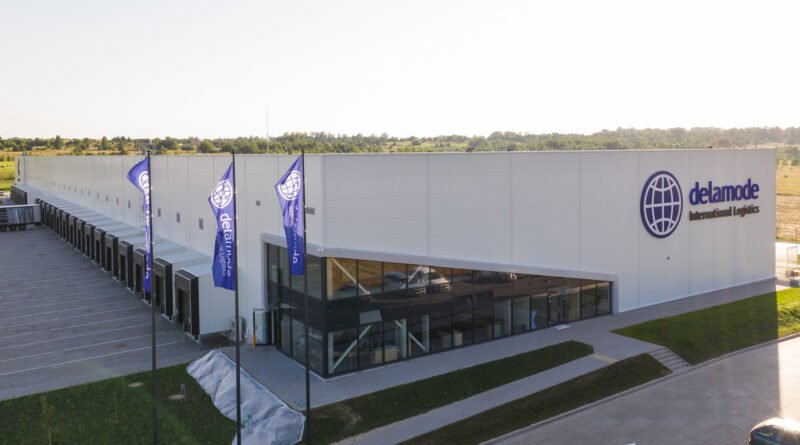The construction of new logistics centers is dictated by logic
Lina Svaldenienė
A modern logistics terminal, a modern warehouse can be like a mirror not only of how the materiality and quality requirements of an industrial building change over the years, but also of how the principles of business operation and the attitude towards the employee change.
If we compare old construction logistics terminals or industrial warehouses with modern ones, we will find the differences at the very beginning of their development. Already at the design stage, higher requirements for heat class, energy saving and technological solutions are set for the future logistics terminal building.
Influence of technological solutions
Investments in the construction of new modern warehousing facilities in 2020 were extremely high. According to Ober-Haus calculations, the area of new storage premises completed last year in the three largest cities of Lithuania exceeded construction areas in these regions in 2019 by almost 60 percent. Last year, the real estate development company Baltic Sea Properties completed the construction of three logistics terminals in Lithuania. Last January, the development of a German logistics operator in the village of Dobrovolė, located south of Vilnius, was completed, and in the summer, the construction of the pharmaceutical services logistics terminal Oribalt Vilnius and the logistics terminal Delamode Baltics was completed. Sigitas Jautakis, Head of Baltic Sea Properties in Lithuania, notes that the basic structural issues in the buildings remain, but the installation and materiality differ greatly: “Clearly, the warehouse is still a warehouse, so there are certain areas, column steps, height, calculated roof loads that are unlikely to change. But the materiality and energy class change, LED lighting is installed instead of old lamps, and other heating solutions are chosen. ”
Quality workplace
Another strong change that separates modern logistics terminals from the old ones is due to the changed attitude towards employees. Simple – people in logistics centers also want normal working conditions. Fifteen years ago, just before the construction of the first logistics terminals began, there were many old, Soviet-built terminals on the market. They were characterized by really very poor quality space. No comfort was provided for the staff. “The new terminals are of a completely different level of quality. At least in the terminals under construction, the working conditions for employees in the offices are not much different from the normal office in the center of Vilnius. Workplaces are completely equipped as well, there are also household premises and all comfort, computer solutions,” says S. Jautakis. He says he has been watching a fairly strong change of attitude lately. Tenants of logistics terminals are beginning to realize that in order to retain employees, they must invest in much higher quality jobs. This is relevant for the protection of both warehouse and logistics employees and managers.
Part of success at work
Another obvious trend is the automation and robotization of warehouse processes. In modern warehouses, technological lines and elevators appear that are completely robotic. These technological devices have to work in suitable premises and the mechanisms are quite sensitive to the working conditions. This means that floor level, temperature and dust control must be provided in advance. “Logistics operators themselves understand that they need such optimization, and they raise those questions. When designing new terminals, we will unequivocally take into account the following: energy class, quality workplace, efficient planning, all automation processes. Ten years ago, probably few people thought about it,” says a representative of Norwegian capital real estate developers. According to S. Jautakis, first of all, new, beautiful, modern shopping centers have entered the market. They have changed the public’s perception of what a mall should look like. The second wave came to the cities with normal offices, when people wanted to work in business centers that are specially adapted for this purpose. And the development of the logistics sector was still in its infancy at the time, when many simply considered the warehouse to be a warehouse and nothing more.
Quarantine has shown what is optimal
“Now is the time, for the fifth year or more, when logistics operators and business leaders see the need to transform in order to serve their customers efficiently and cost-effectively. They have to go to high-quality, modern logistics centers, because it is part of the success of their work,” S. Jautakis shares the insight. Newly built terminals take into account traffic flows, the operation of heavy transport, and the organization of loading and unloading. Automated processes, optimizations, traffic flow control shorten service time, reduce service costs. This benefits the logistics operator: it serves the customer faster. Accordingly, their customers are also satisfied as they receive quality service with perhaps even lower costs and highly efficient time control. “Nowadays, no one expects that when you order a product, you will get it to Vilnius in a week. Everyone wants a day or two. We see a tendency to talk about the delivery of goods not on three days, but on the same day or half a day, – emphasizes S. Jautakis. “The whole logistics chain is built on the fact that when a consumer or business orders goods, he can’t wait a week – he wants them now and immediately.” During the quarantine period, logistics is undergoing a process of efficiency, as changed conditions show what is optimal and what needs to be done.
Microship logistics will grow
Ober-Haus predicts that the development of compact and universal warehousing projects closer to the consumer will intensify in the future, as it is driven by the rapidly growing e-commerce. However, the logistics terminals completed in 2020 have nothing to do with the trade realities that changed during the pandemic. Baltic Sea Properties simply implemented long-term agreements with future tenants before the pandemic. The head of this company also predicts more logistics solutions for micro-shipments in the market: “We see that small logistics and online trade are especially relevant this year. A pandemic seems to stop life on the street, but in reality life doesn’t stop. People continue to eat, need to dress, still need household items. Consumption has changed – it has fallen somewhere, but it has risen somewhere. Accordingly, the number of micro consignments has grown really strongly and I do not think it will stop growing. ”During the pandemic, people experienced new consumption patterns and experts agree that people will return to work and supermarkets after quarantine, but certainly not as much as before the pandemic.




